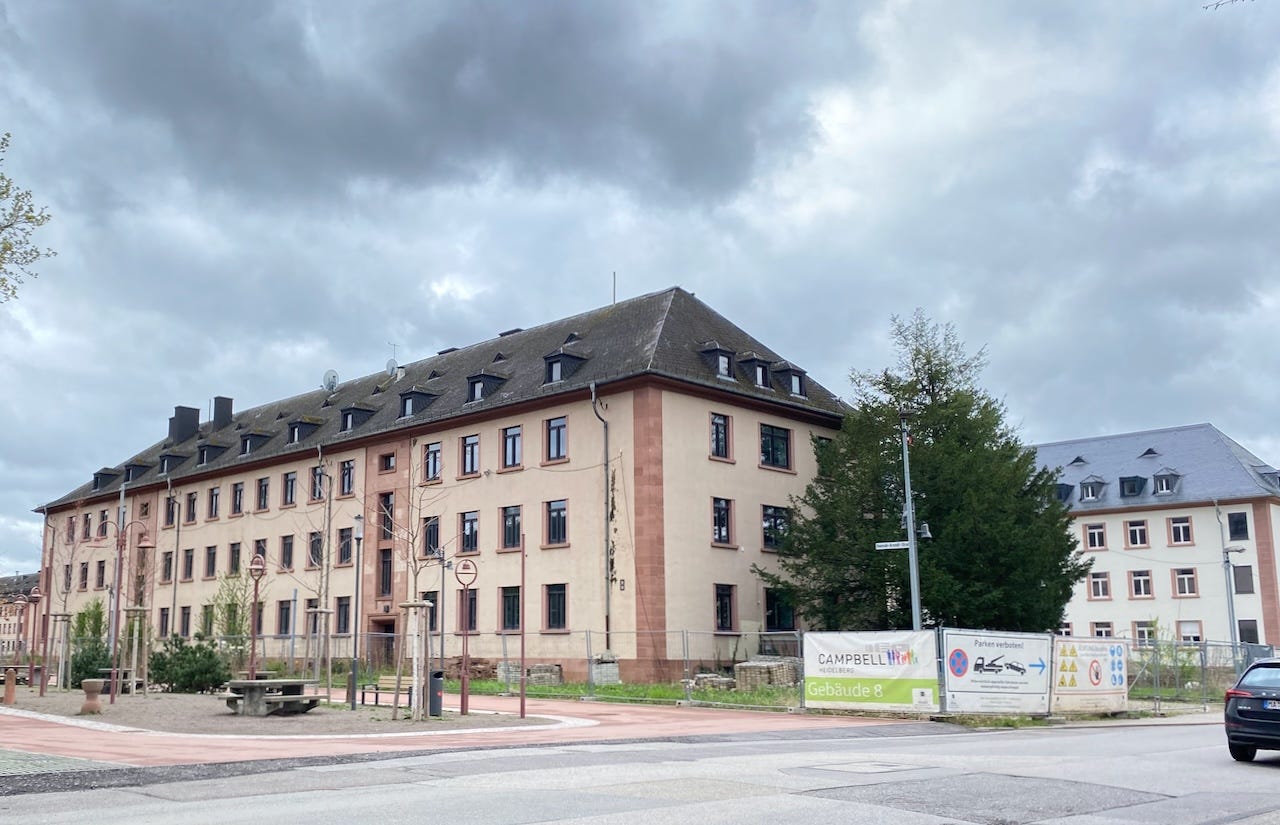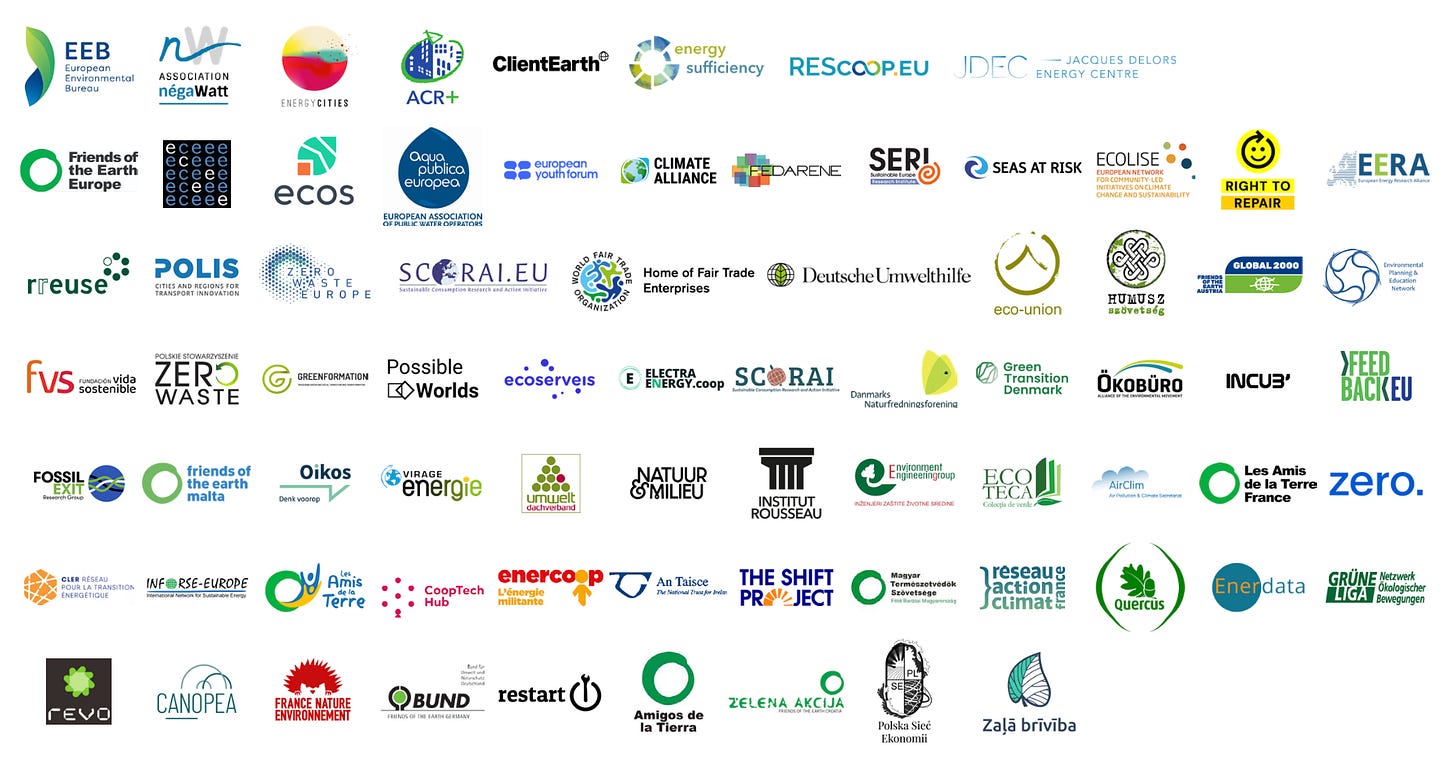Manifesto puts sufficiency at the heart of the EU's future
The concept of sufficiency is truly entering the mainstream, as people realize that efficiency alone can't do the job.
In my meandering journey from Paris to Innsbruck, I stopped in Brussels to meet Adrian Hiel of Energy Cities, which “empowers cities and citizens to shape and transition to future proof cities.” It is one of 74 European organizations that signed a manifesto titled A resilient and resource-wide Europe: Sufficiency at the heart of the EU’s future that was released in March.
Sufficiency is also at the heart of my two books, including the upcoming Story of Upfront Carbon, where I conclude that “the pursuit of sufficiency, or making and buying just what we need, has become a powerful strategy for tackling climate change.”
The manifesto starts with the IPCC definition, describing “sufficiency as policies, measures, and daily practices that avoid the demand for energy, materials, water, and land while delivering human well-being for all within planetary boundaries.” The authors continue:
“Sufficiency focuses on the needs of people and thus on wellbeing. By prioritising the amount, level, and nature of goods and services that require resources, sufficiency is different from efficiency, which is concerned with reducing the relative amount of resources needed to provide a given good or service by technological solutions.”
The manifesto notes that sufficiency increases resilience by reducing demand for energy and water, and avoiding “the need for high-risk technologies with uncertain availability and costs and reduces pressure on materials (i.e. mining for critical minerals.”- no need for hydrogen or direct air capture here. Sufficiency “minimises costs as it avoids wasting resources, as well as unnecessary infrastructure investments.”
My numerous critics regularly complain that I am always asking people to give stuff up, to make personal decisions to live with less. But one of the report authors, Mélanie Bourgeois of Energy Cities, told me in an interview that it was specifically written to avoid the question of individual actions. The manifesto covers structural measures taken by European states to nudge us in the right directions. Some examples:
Transport/Mobility:
“Setting frameworks and incentives – including a massive shift in infrastructure investments – to support the reduction of individual car use by making public transportation, car-pooling, and sharing as well as cycling and walking more attractive and available, and by promoting short-distance travel and a more localised provision of services and supplies.”
However, in a nod to reality, “Recognizing there will still be significant car use in decades to come, addressing excessive and unnecessary characteristics of cars through criteria that better address the weight, dimensions, and environmental foot-print of vehicles.”
Energy, Buildings, and Spatial Planning

An important nod to renovation and reuse:
“Prioritising optimising use of existing buildings and spaces over new builds by promoting or updating existing tax regimes, zoning rules, building codes, and other policies which favour recording and repurposing vacant buildings, multiple use and sharing spaces in buildings.”
An understanding of whole-life carbon:
“Aiming for a performance-based policy framework for measuring and reducing the whole-life carbon footprint of buildings in order to act upon all the available carbon reduction opportunities in the building stock.”
Materials, products, food and water
This is excellent, distilling into a single paragraph what takes me a whole chapter:
“Promoting resource and material sufficiency through product design rules aimed at limiting absolute energy and resource consumption, such as eliminating categories of single-use products, shifting recovery and recycling obligations toward producers and away from consumers, improving durability and repairability, and ending the destruction of unsold products.”
It is all carefully constructed to avoid offending anyone; not a peep in the food section about reducing meat consumption or even better use of fertilizers, just a very general:
“Advancing a new governance and funding framework for food systems aimed at improving the resilience and sustainability of food production and consumption across the entire value chain, in a manner that is mutually beneficial for farmers and the environment.”
I suppose that if you are going to get 74 organizations to sign on to a document like this, it is not going to be very radical. But, like the Declaration de Chaillot, it is bringing the concept of sufficiency into the mainstream, after years of it being ignored or downplayed. Janez Potočnik, Former EU Commissioner and Co-Chair of the International Resource Panel noted in the press release:
“Efficiency should be complemented by sufficiency policies. In addition to asking ourselves how much is enough to meet our essential needs, we should also find strategies to meet them in the most energy and resource-efficient way”
But this isn’t just true for Europe, it is true everywhere and about everything, and can be summarized in three words: Use less stuff.







It was great to see you Lloyd. A real pleasure. If any of your knowledgeable readers have any constructive feedback on the Sufficiency Manifesto I would love to hear it!
So many people reject any suggestion of cultural change but never give good reason why they reject it. Nothing is a given, ever. Nothing is forever, ever.